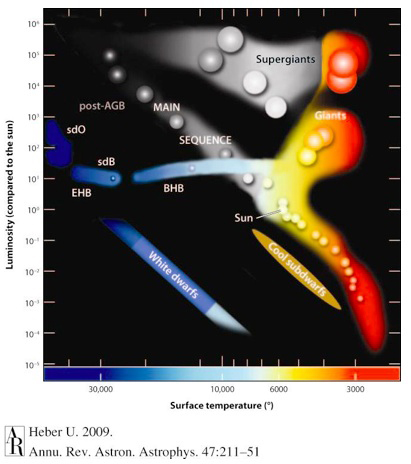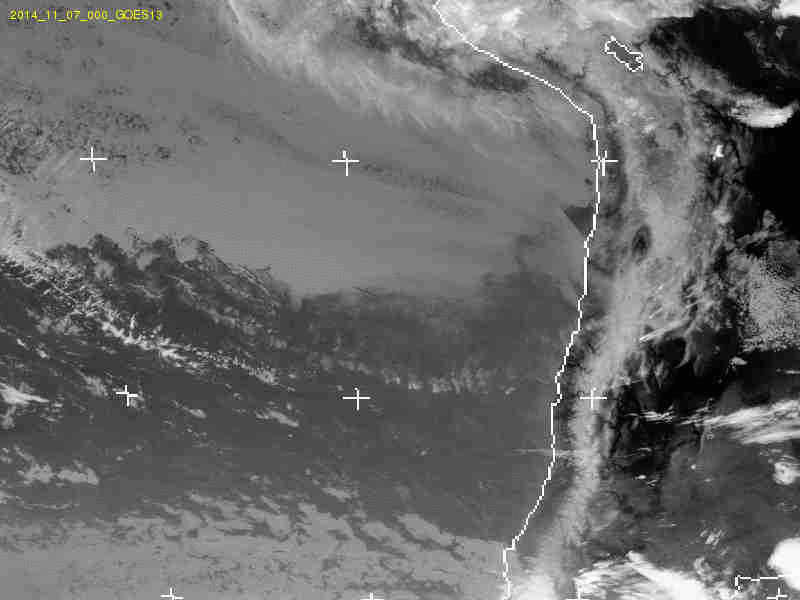 Hot subdwarf stars represent several stages in the late evolution of low-mass stars as they have evolved far beyond the main sequence (MS) and lie between the MS and the white-dwarf (WD) sequence (see figure H-R.jpg).
Hot subdwarf stars represent several stages in the late evolution of low-mass stars as they have evolved far beyond the main sequence (MS) and lie between the MS and the white-dwarf (WD) sequence (see figure H-R.jpg).
The booming field of hot subdwarf stars has been enriching our knowledge on very broad and diverse fields of astrophysics, all the way from binary stellar evolution and asteroseismology to planet findings. Hot subdwarfs are directly linked with a number of issues in astrophysics such as the second parameter problem and multiple stellar population puzzles in globular clusters; binary evolution via Roche Lobe Overflow; common envelope evolution; white dwarf mergers and progenitors of SN Ia supernova. On a galactic scale, they seem to be the key for explaining the ultraviolet upturn phenomenon in giant elliptical galaxies and bulges in spiral galaxies.
While these unique stellar laboratories continue to provide remarkable astrophysical findings they still manage to elude us in understanding the most important stellar evolution question, namely, how exactly do they form?
Hot subdwarf stars (spectral type B, and O, shortly sdB and sdO) are extreme horizontal branch stars (EHB) that are low-mass white dwarf (WD) precursors. To date, the precise age and evolutionary history of these stars are unknown. They are core helium burning stars that have exceptionally thin hydrogen envelopes unable to sustain hydrogen shell burning. Therefore, these stars evolve directly to the WD cooling sequence avoiding the asymptotic giant branch (AGB) phase. The mechanism by which they’ve lost their envelopes has been controversial, in particular, how they managed to lose nearly all of their hydrogen at almost exactly the same time as the helium core has attained the minimum mass (∼0.5 M⊙) required for the helium flash to occur?
As a significant fraction of hot subdwarfs are found in binaries various types of close binary interactions are required for their formation, depending on the mass ratio, schemes such as common-envelope ejection (CEE), Roche-lobe overflow (PLOF), and mergers, have been proposed. The fact that they most likely form via binary interactions makes them a valuable testing ground for binary stellar evolution theory.
We are currently involved in several project aiming at deriving the fundamental parameters and backtracing the controversial evolution of hot subdwarfs.
- Astroseismology of hot subdwarfs,
- The influence of close substellar companions on late stellar evolution,
- Orbital analysis of short period subdwarf binaries,
- Detecting and characterizing the substellar objects around EHB stars,
- Orbital period distribution of long period subdwarf binaries, in 2009 we initiated a spectroscopic monitoring survey to further populate the period-eccentricity space, and constrain possible eccentricity-pumping mechanisms
- Irradiation effects in HW Vir-type binaries, we are analysing and modelling the irradiated light of the cool M dwarf secondaries in HW Vir-type binaries in order to derive accurate masses of both components and pin down the evolution of these systems. Combining these results with luminosity and astrometric data from Gaia mission to eliminate outliers will make the final assessment on the masses of the EHB stars.
The remaining questions we are interested in are - why some sdB star pulsate while others do not? - why some close binary systems are fully synchronised while others are not? - are planets, recently reported, around hot subdwarfs real? – if so, do planets play an important role in the formation of sdB stars?
If you are also puzzled by any of these questions drop us a note or come and join us!
Investigators:
Professors Maja Vuckovic
Postdocs: Joris Vos





